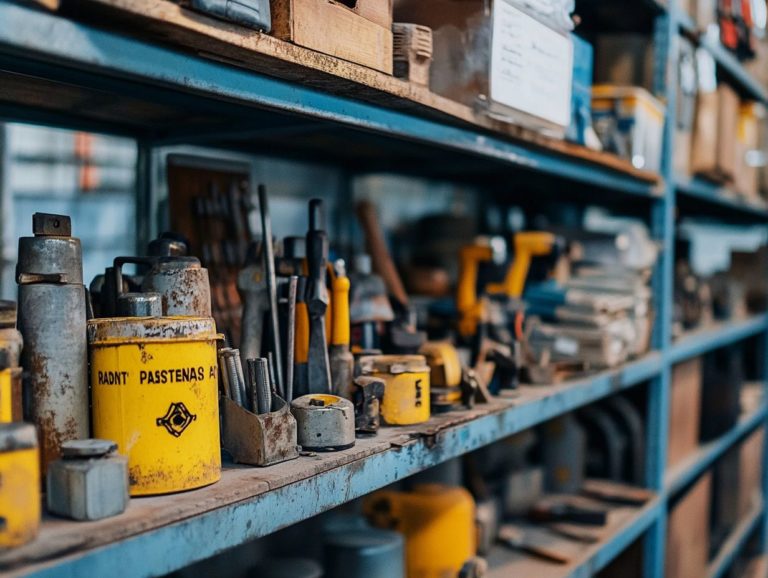How to Properly Label Your Stored Metals
Properly labeling stored metals is essential for maintaining organization and safety within your workspace.
With a multitude of labeling options at your disposal, grasping their specific uses can significantly streamline your processes and ensure adherence to industry regulations.
Discover how effective labeling practices can transform your workplace! This article delves into effective labeling practices, highlights common pitfalls to steer clear of, and outlines the legal requirements that govern metal storage.
By the conclusion, you will possess the insights needed to elevate your metal storage practices and foster a safe, efficient environment.
Contents
- Key Takeaways:
- The Importance of Properly Labeling Stored Metals
- Types of Labels for Metals
- How to Label Stored Metals Effectively
- Common Mistakes to Avoid
- Labeling Regulations and Compliance
- Frequently Asked Questions
- Why is labeling your stored metals so important?
- What information should be included on a label for stored metals?
- How should the label be attached to the stored metal?
- What are some tips for creating legible labels for stored metals?
- How often should labels be checked and updated?
- What should be done with damaged or illegible labels?
Key Takeaways:
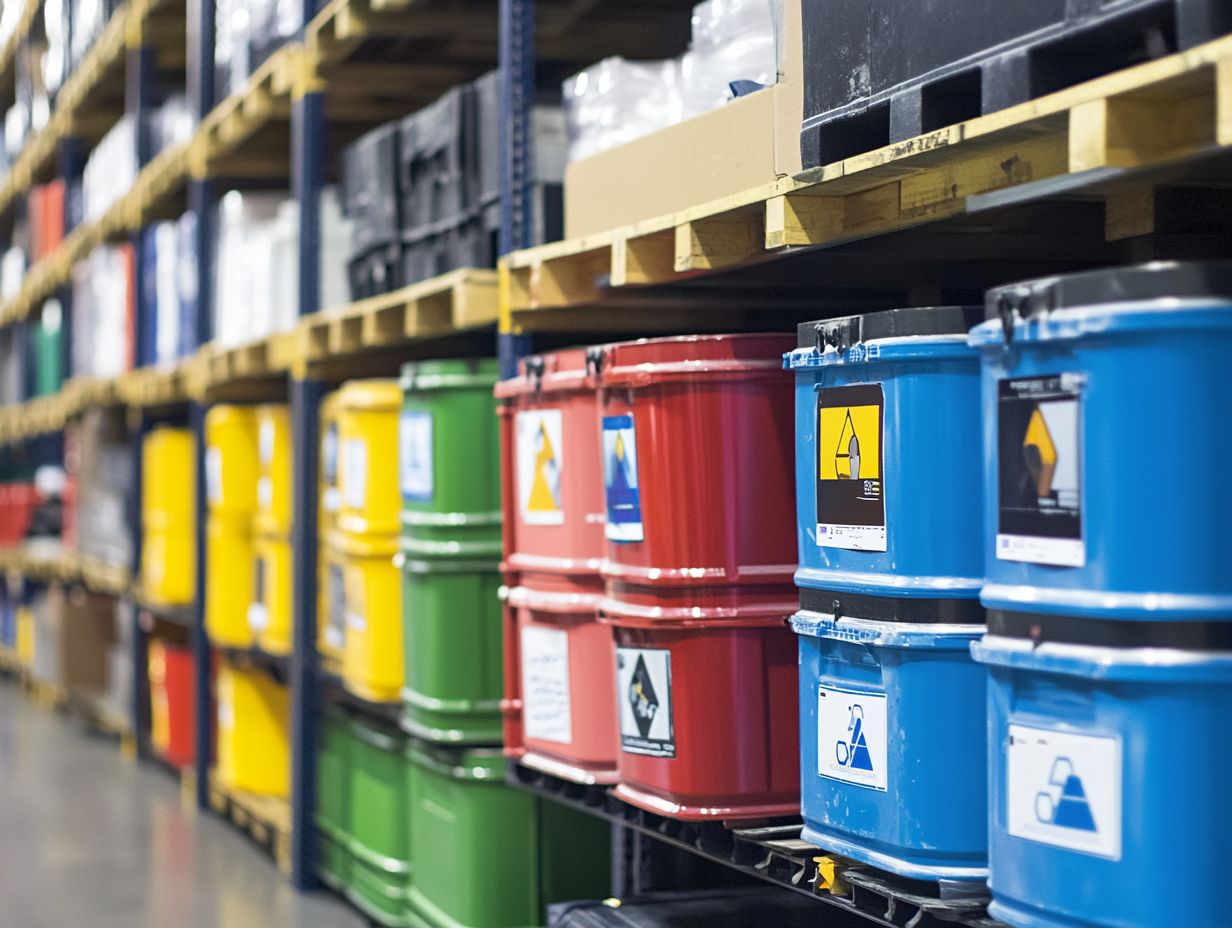
- Various types of labels are available for metals, including barcode labels and adhesive stickers, each with their own specific uses and benefits.
- To ensure effective labeling, follow best practices such as using permanent markers, avoiding overcrowding, and regularly checking and updating labels.
- Common labeling mistakes, such as using incorrect or illegible labels, can lead to confusion and potential safety hazards, so be mindful and avoid these errors.
- It is important to comply with industry standards and legal requirements for labeling stored metals, such as including specific information like material composition and handling instructions.
The Importance of Properly Labeling Stored Metals
Properly labeling your stored metals is essential for effective asset management. This not only ensures organization but also guarantees compliance with safety regulations, ultimately enhancing operational efficiency across various manufacturing processes.
By adopting effective labeling techniques, your business can significantly reduce risks related to equipment misidentification and streamline maintenance tracking for machinery. Choosing durable labels made from materials like anodized aluminum or stainless steel helps them resist harsh environmental conditions, creating a safer and more efficient workplace.
Why Labeling is Essential for Organization and Safety
Labeling is crucial for organization and safety, as it elevates asset identification and ensures compliance with safety regulations, especially in industrial settings where equipment manufacturers face rigorous scrutiny.
By implementing clear and consistent tags, you can significantly diminish the risk of accidents and injuries stemming from misidentified or poorly managed equipment. If you adhere to OSHA guidelines, it’s essential to label hazardous materials properly to safeguard employees from exposure.
Embracing innovative tagging solutions, such as barcode labels, can streamline your asset tracking and maintenance management. These systems enable real-time monitoring of equipment status and enhance regulatory compliance by ensuring that maintenance schedules are met and accurately documented.
In essence, effective labeling practices not only bolster safety but also amplify operational efficiency across a range of sectors.
Types of Labels for Metals
You ll find a diverse range of labels available for metals, including metal labels, adhesive labels, and flexible labels. Each type is expertly crafted for specific labeling needs and environments, engineered to resist environmental damage and ensure lasting durability.
Labeling Options and Their Uses
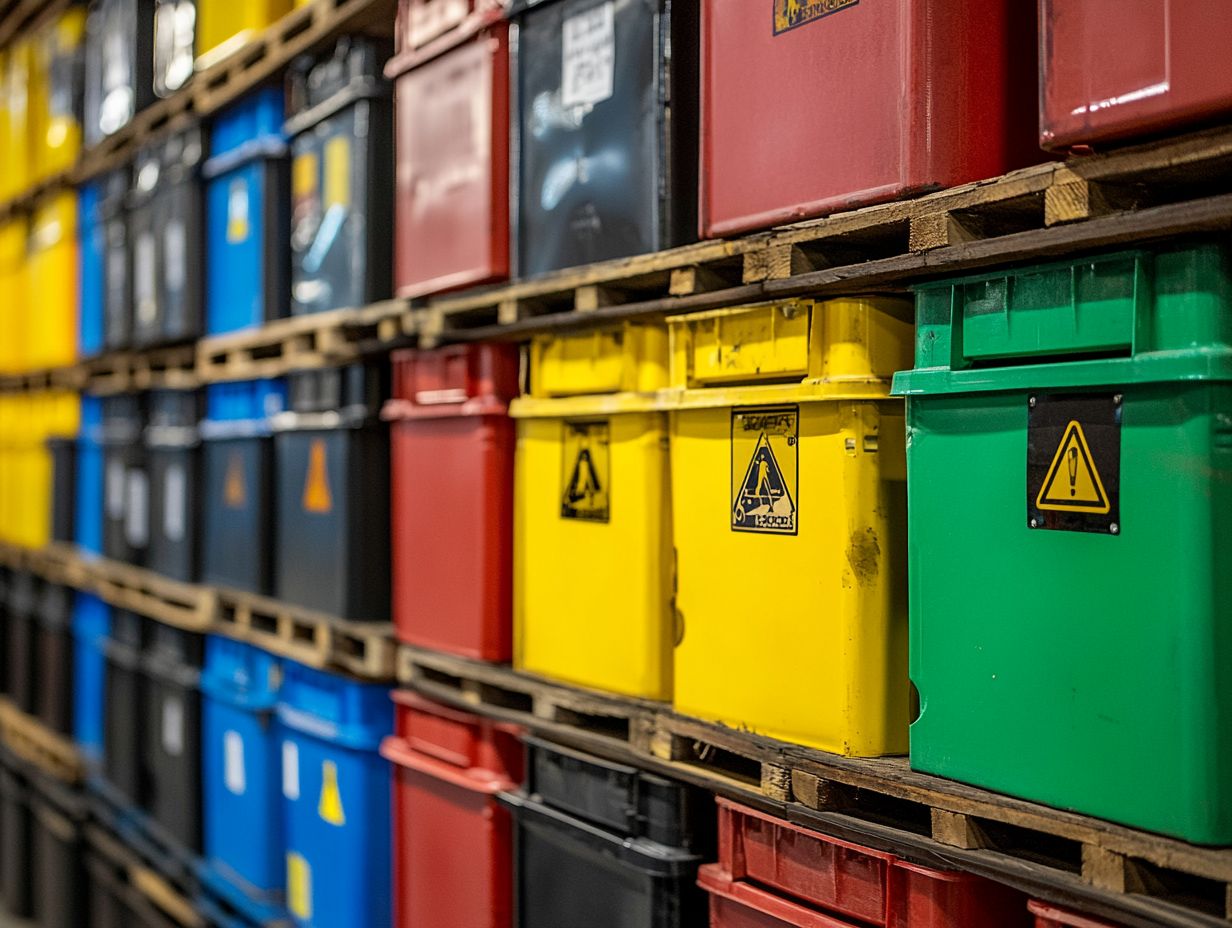
Labeling options for metals encompass a range of techniques tailored to your specific needs, whether it’s equipment tags designed for high-temperature settings or UV-resistant labels you can scan with a device for easy tracking perfect for outdoor use. These diverse labeling methods are essential in various workplaces, significantly enhancing safety and efficiency.
For example, scannable labels can simplify your inventory tracking, enabling quick identification and management of assets. Meanwhile, durable metal substrates guarantee longevity and resistance to wear and tear.
In high-traffic environments where equipment identification is crucial, employing strong labeling techniques reduces errors and increases operational productivity. By selecting the appropriate materials, you further ensure the reliability of your labeling solutions, allowing them to adapt seamlessly to the unique challenges present in manufacturing, construction, and logistics.
How to Label Stored Metals Effectively
Consider these key factors to make your labeling effective: the quality of the labels, the environmental conditions they ll face, and design elements that ensure clarity and compliance. These factors work together to enhance your maintenance tracking and ensure adherence to safety labeling standards.
Tips for Effective Labeling
To achieve effective labeling, consider implementing strong labeling systems that utilize durable materials and follow organizational tips designed to enhance your asset management and ensure compliance with rules you need to follow.
By meticulously selecting tag materials that can withstand various environmental factors like moisture, temperature fluctuations, and chemical exposure you can guarantee that your labels remain legible and intact over time.
Clear equipment identification is essential; using standardized formats and fonts helps improve readability and aids in the quick retrieval of information by your team members.
Establishing a systematic labeling approach can streamline maintenance tracking, helping you efficiently schedule regular inspections and facilitate seamless communication among staff. This ultimately promotes a safe and organized workspace, allowing everyone to work more effectively.
Common Mistakes to Avoid
Avoiding common mistakes in labeling is essential for ensuring effective asset tracking and compliance with safety regulations. Frequent errors such as poor label durability and unclear information can significantly undermine your efforts.
Taking the time to implement precise and resilient labeling practices will not only enhance your asset management but also keep you in line with the necessary regulations.
Labeling Errors to Watch Out For
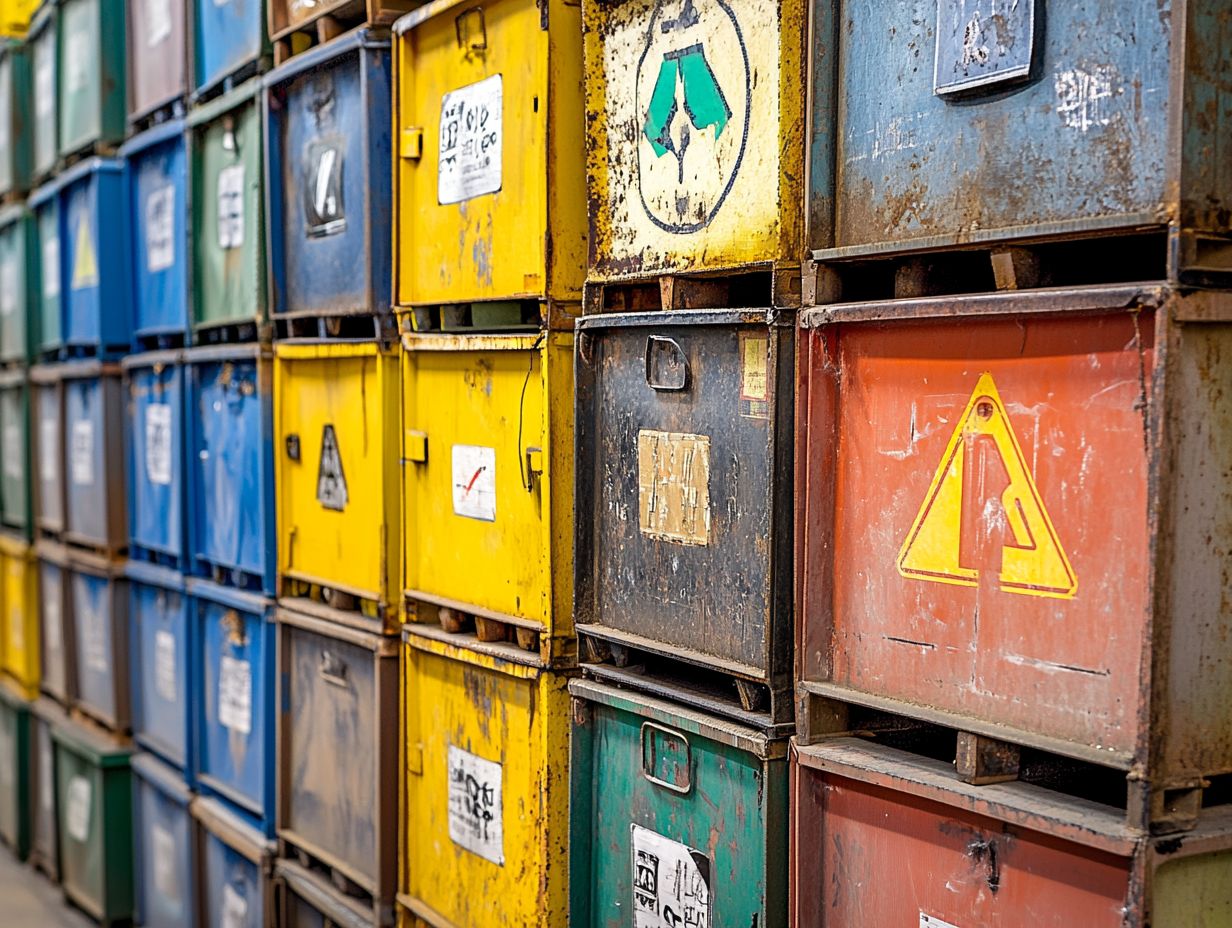
Labeling errors often arise from inadequate asset identification and a failure to adhere to safety labeling standards, leading to operational inefficiencies and heightened safety risks under various environmental conditions.
These errors complicate maintenance tracking and result in incorrect equipment usage, further exposing your organization to potential hazards. When assets are improperly labeled, your technicians may struggle to locate the necessary parts in a timely manner, causing unnecessary delays and escalating operational costs.
To address these challenges, it’s essential for you to adopt best practices such as implementing a standardized labeling system, conducting regular audits, and leveraging technology for accurate inventory management. By taking these steps, your organization can enhance asset visibility, ensure compliance, and foster a safer workplace.
Labeling Regulations and Compliance
Understanding labeling regulations and compliance requirements is crucial for businesses engaged in industrial applications. By ensuring that all labeling systems conform to safety regulations, you protect both your assets and your personnel from potential environmental hazards.
This attention to detail not only safeguards your operations but also enhances your reputation in the industry.
Industry Standards and Legal Requirements
Industry standards and legal requirements lay the groundwork for safety labeling and compliance. They guide you, as an equipment manufacturer, in establishing effective labeling systems that align with regulatory expectations.
These standards cover a variety of specifications, including the Global Harmonization System (GHS), an international system for classifying and labeling chemicals, and the benchmarks set by organizations like ANSI and ISO. Their importance is paramount, as they are crafted to safeguard users by delivering clear and actionable insights on potential hazards.
You must follow these guidelines to ensure your labels effectively communicate safety practices to consumers. Failing to comply isn t just risky; it could lead to legal troubles and harm your brand’s reputation! This underscores the critical need for precise and compliant labeling.
Watch the video to learn more about the importance of safety labeling.
Frequently Asked Questions
Why is labeling your stored metals so important?
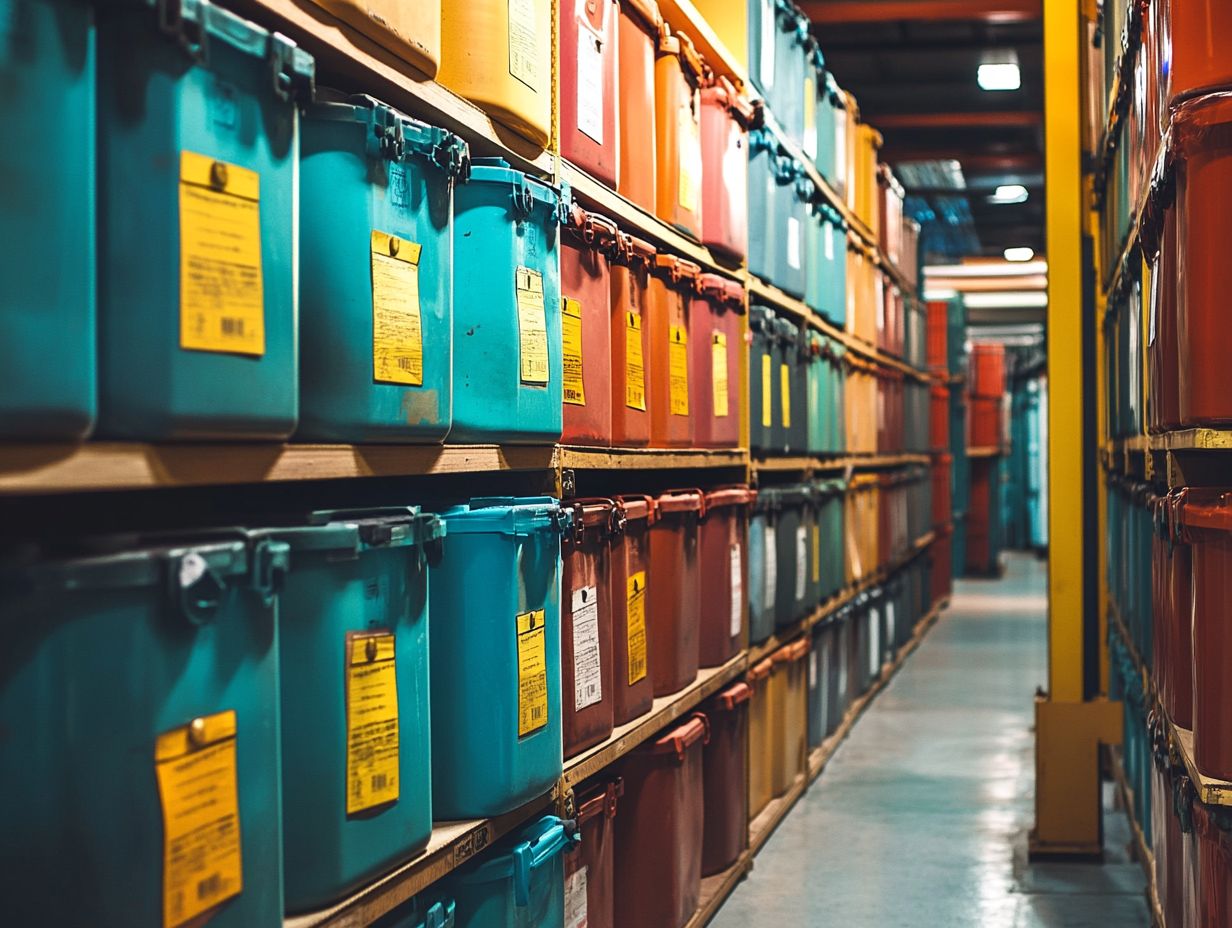
Properly labeling your stored metals allows for easy identification, organization, and tracking of your inventory. It also helps prevent mix-ups and potential safety hazards.
What information should be included on a label for stored metals?
The label should include the type of metal, its grade or purity, and any specific handling or storage instructions. It should also include the date of storage and the quantity of the metal.
How should the label be attached to the stored metal?
The label can be attached using adhesive tags, tie-on tags, or even permanent markers directly on the metal. The key is that the label is secure and easily visible.
What are some tips for creating legible labels for stored metals?
Use a permanent marker or label maker with bold, clear lettering. Avoid small font sizes or handwriting that may be difficult to read. It’s also helpful to use different colors or symbols for different types of metals.
How often should labels be checked and updated?
Labels should be checked and updated whenever there is a change in the stored metal, such as a new batch or a change in quantity. Regularly checking labels also ensures they remain legible and securely attached.
What should be done with damaged or illegible labels?
If a label becomes damaged or illegible, it should be replaced immediately. In a mix-up or emergency, having accurate and readable labels is crucial for proper identification and handling of stored metals.














